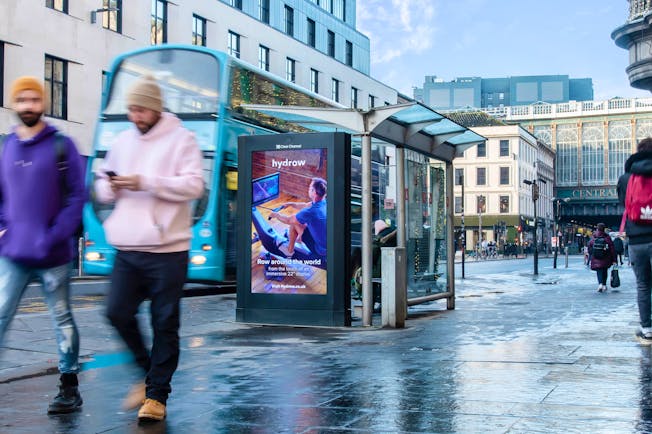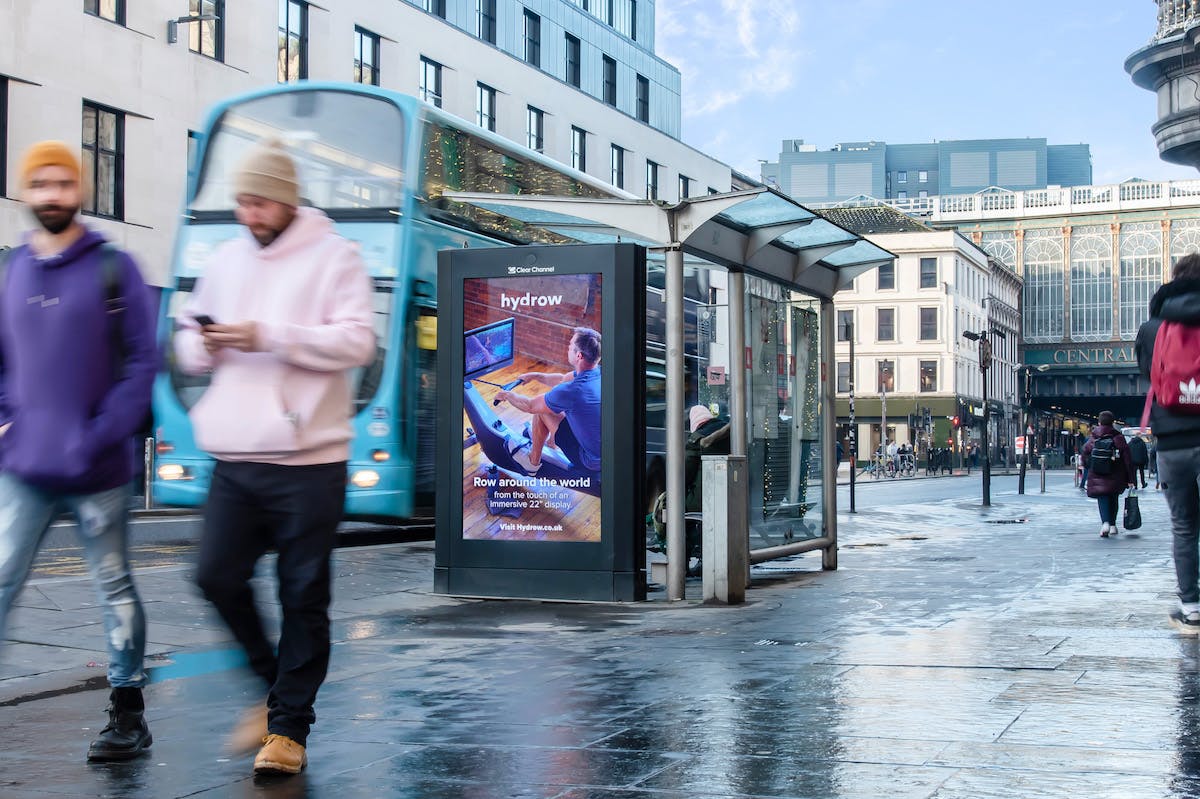Short-term sales activations can be a crutch – great at boosting revenue but a quick fix that only papers over the cracks in longer-term brand strategy.
As Shopify puts it in its Future of eCommerce report, “Brands that haven’t developed familiarity and trust with consumers will become more entrenched in a direct-marketing battle to offer customers the lowest price”.
And with over 80% of shoppers going online and in-store, it will soon become even more important to influence those consumers at every touchpoint in a cookie-less future world.
So, to take a considered approach to ‘the long and the short of it’, ecommerce and digital marketers should get to know the relative merits of all of the new advertising opportunities available to them, one of which is digital out-of-home (DOOH).
At Clear Channel, there are now more than 1 billion impressions available programmatically on DOOH. Kantar’s Media Reaction 2022 report showed both consumers and marketers alike placing DOOH ads in the top 5 ranking media channels for positivity, preference and ad equity meaning a stronger receptivity to the channel.
In this article, we’ll look at the why, how and what ecommerce marketers need to know about programmatic out-of-home (prOOH). From the new real-world opportunity available to digital buyers and what the cookie-less future looks means for priming your audience, to how marketers choosing prOOH today are stealing a march on planning more effective, omnichannel campaigns.
Why DOOH? A real-world experience with a priming effect on online ads
To drive growth, it’s essential to be present wherever and whenever your consumers are. DOOH can provide a bridge between real-world and online retail experiences. In fact, more than half of consumers surveyed as part of Clear Channel’s IRL to URL study say they feel more connected to online brands that they can also see in the real world.
Out-of-home offers brand-safe environments with large audience volumes seen in public spaces, many in proximity to large retail centres, with premium location-based context compared with online content. This is in contrast to digital media, where brand safety is a continuing issue and, at best, affects the visibility of your ad.
Whilst the pandemic has hugely evolved the ecommerce landscape, consumer trust remains significantly lower for online platforms when compared to in-store experiences, with shoppers saying they are 30% less likely to trust an online purchase. A real-world presence in a public channel is a foundational block for brand recognition and connection. The benefit for marketers being that consumers are twice as likely to return to familiar brands than try something new, as well as being willing to spend more on brands they recognise.
Industry research from JCDecaux has evidenced a positive synergy between digital and out-of-home strategies. The priming effect of outdoor shows an impressive 36% increase in attention paid to online ads when primed using OOH, alongside a 67% increase in cookie-less click-throughs when an online campaign is supported by outdoor. A further study, Sightline’s DOOH Difference 2022, notes that DOOH encourages 66% more people to search online, and 50% of people to make online purchases.
There is plenty of evidence pointing to the effectiveness of planning and pairing online and offline media channels together.

How ‘DOOH’ you do?’ Adoption is growing rapidly
The growing opportunity to activate DOOH as part of programmatic campaigns has coincided with a rise in confidence amongst digital marketers using it.
In 2022, Clear Channel’s DOOH impressions have doubled, to over 1bn, and the brand count of advertisers buying programmatically has grown more than 100, from existing out-of-home spenders complementing digital plans at key brand moments, to new digital-native brands dipping their toes into DOOH for the first time.
Marketers are recognising the benefits of adding DOOH alongside their existing digital capabilities. The DOOH Difference report quoted 66% of omni-digital decision-makers activating DOOH campaigns as part of their advertising within the last 18 months.
So how are these marketers using DOOH?
Learn more about Clear Channel’s pan-European programmatic buying platform, LaunchPAD.
What to ‘DOOH’? Test & learn. Test. And learn.
Within every good marketing strategy there should be an element of test and learn, providing regular opportunity for continuous development and improvement. In a world with ongoing macro environment challenges, advertisers are focused on reaching the right customers in the most relevant environments to hit their objectives.
With DOOH proven to enhance the effectiveness of other channels, it’s good to know how and why marketers are using it. According to Sightline, marketers using DOOH do so for three primary purposes:
- 35% use DOOH to complement a digital plan, including footwear brand UGG, which used the power of OOH and mobile to help amplify a new clothing line across urban hubs and shopping malls. The real-time capabilities of programmatic buying meant the brand were able to optimise the campaign to higher footfall times of day as well screens indexing higher against the UGG target audience, resulting in upticks to both awareness and consideration.
- 42% are contextually targeting audiences – such as Aperol, which targeted high-footfall locations, choosing only to activate their advertising when there were perfect cocktail conditions and a high likelihood to influence drink choice – warm, sunny weather above 19°, Thursday to Sunday, 1pm – 8pm. The campaign was built on insight that warmer weather influences behaviour and purchase choice.
- 44% are activating location-based targeting, including rowing machine brand Hydrow, which targeted major UK cities, frequent users of Tier 1 gyms, strategic points of interest and locations with a higher concentrated index of their target upper-middle-income audience. A brand lift study of the campaign demonstrated impressive increases in brand awareness and purchase intent.
Whilst I know you’ll now be rushing to add DOOH to your digital plans, as with all cases of ‘test and learn’, the vital thing to remember is to be crystal clear on the test objectives, and to build hypotheses from solid campaign foundations. Don’t trial everything at once. But the exciting developments within the space mean it’s easier than ever to activate and run those tests with a new channel, with the same level of flexibility, in-flight optimisation, frictionless buying and audience segmentation as your existing ones. There are lots of partners operating within the prOOH space to help you get started, answer questions and educate on the benefits.
Diederick Ubels, CEO and Co-founder, Sage + Archer, commented, “We’ve seen brands unlocking budgets to trial DOOH campaigns as part of their overall digital strategy. From localised store-support to drive footfall, to targeting shoppers at key brand moments, throughout 2022 we’ve seen more marketers successfully hitting their business objectives with an intergrated, omnichannel approach. Through simplified, brand-safe planning and execution, our conversations are pointing to a significant growth year for programmatic Out of Home.”
For more information on the programmatic landscape and Clear Channel LaunchPAD, you can discover more in the Programmatic OOH Playbook.







